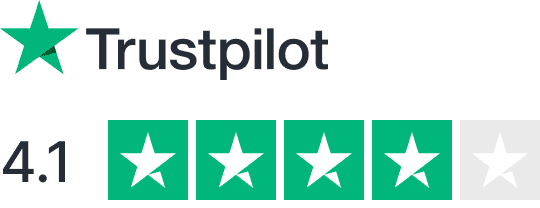Want to onboard LATAM developers effectively? Here’s what you need to know:
- Why LATAM developers are in demand: Cost savings (30-50% less than US-based talent), time zone compatibility, cultural alignment, and strong technical skills.
- Key onboarding steps: Legal setup (contracts, taxes, benefits), technical preparation (tools, security, infrastructure), and cultural understanding (work styles, feedback preferences).
- 30-60-90 day plan: Gradual integration with clear milestones – orientation, technical training, team integration, and independence.
Quick Tip: Use structured onboarding processes for a 20-30% productivity boost in the first 90 days. Keep reading for step-by-step guidance and practical tools.
Best Practices for Remote Employee Onboarding
Pre-Onboarding Setup
Getting everything ready before bringing LATAM developers onto your team can make a huge difference. Companies that invest time in thorough pre-onboarding often see new hires contributing much faster. This prep work helps ensure smooth cultural and technical integration, as mentioned earlier.
Here’s what you need to focus on:
Legal Requirements
Labor laws in LATAM countries differ significantly from those in North America. Key areas to address include:
| Requirement | Description | Impact |
|---|---|---|
| Work Contracts | Written agreements detailing responsibilities and compensation | Required in most LATAM nations |
| Social Benefits | Benefits like 13th-month pay and extended notice periods | Varies by country |
| Tax Obligations | Local tax registration and withholding processes | Country-specific |
| Data Protection | GDPR-style rules (e.g., Brazil’s LGPD) | Strict adherence needed |
To handle these effectively, it’s wise to consult legal experts or work with staff augmentation agencies familiar with LATAM regulations.
Technical Setup Steps
Make sure all systems are ready before the developer’s first day. Key steps include:
- Security and Access
- Set up secure VPNs, multi-factor authentication, and necessary security software.
- Provide training on your company’s security policies.
- Development Environment
- Prepare tools like version control (e.g., GitHub/GitLab), project management platforms (e.g., Jira/Trello), communication tools (e.g., Slack/Teams), and documentation portals.
- Infrastructure Support
- Offer internet stipends and ensure backup communication options.
- Provide access to cloud-based tools and resources.
Work Style Differences
Cultural understanding plays a big role in successful onboarding. Here are some common traits and how to address them:
| Aspect | LATAM Style | Adaptation Strategy |
|---|---|---|
| Feedback | Reluctance to give direct disagreement | Use anonymous feedback channels |
| Work Hours | Preference for flexible schedules | Set clear expectations upfront |
| Meeting Culture | Appreciation for structured meetings | Share detailed agendas in advance |
Pairing new hires with experienced team members through a buddy system can also help them feel more comfortable and speed up their adjustment.
Step-by-Step Onboarding Plan
This plan builds on earlier legal and technical preparations while focusing on aligning new team members with company goals and culture.
30-Day Onboarding Schedule
This phased approach helps new hires get up to speed quickly:
| Week | Focus Areas | Key Activities |
|---|---|---|
| Week 1 | Orientation | Introduction to company culture, team meetings, and completing basic setups. |
| Week 2 | Technical Training | Tool-specific training, reviewing coding standards, and starting small tasks. |
| Week 3 | Integration | Participating in sprints and meeting key stakeholders. |
| Week 4 | Independence | Taking ownership of projects, code reviews with senior developers, and performance evaluations. |
Technical Integration Steps
- Access Provisioning
- Set up email and communication tools.
- Grant access to version control and project management platforms.
- Share security training materials.
- Resource Centralization
- Provide a single repository for code standards, API documentation, and CI/CD setup guides.
- Environment Configuration
- Deliver a pre-tested local development setup with monitoring tools included.
Team Support System
A strong support system ensures smooth onboarding:
| Support Element | Purpose | Implementation |
|---|---|---|
| Primary Mentor | Technical guidance | Assign a senior developer for daily support. |
| Support Channels | Quick problem-solving | Use dedicated Slack channels and a knowledge base. |
| Regular Check-ins | Progress tracking | Hold daily standups and weekly reviews. |
Support Strategies:
- Trained Mentors: Assign mentors skilled in cross-cultural communication for regular one-on-one sessions.
- Shared Knowledge: Provide recorded workshops covering company-specific tech stacks.
- Progress Tracking: Align daily standups with the 30-day onboarding goals.
sbb-itb-a3fbb4e
Team Integration Methods
Building on the momentum of the 30-Day Onboarding Schedule, integrating LATAM developers into teams requires clear communication and an awareness of cultural nuances. These strategies ensure ongoing alignment and collaboration.
Communication Guidelines
Strong communication is key to successful integration. Here are some core practices:
| Communication Element | Action | Result |
|---|---|---|
| Documentation | Create a centralized knowledge base with diagrams | Improves knowledge retention |
For technical discussions, use visual tools like wireframes to bridge any language gaps. Set up project-specific communication channels with clear, standardized naming conventions for better organization.
Remote Team Activities
Virtual team-building activities can help create meaningful connections within distributed teams:
| Activity Type | Format | Engagement Goal |
|---|---|---|
| Cultural Showcases | Monthly virtual meetups inspired by cultural adaptation strategies from Pre-Onboarding | Encourages cultural understanding |
| Coding Dojos | Weekly pair programming sessions | Enhances technical skills |
Globant’s "Coding Dojos" program is a great example of how structured collaboration can not only improve technical skills but also strengthen interactions across teams through live coding exercises.
Progress Reviews
Tracking progress effectively requires a mix of data-driven insights and personal feedback:
| Review Type | Frequency | Focus Areas |
|---|---|---|
| One-on-One Sessions | Weekly | Address individual concerns and growth |
| Team Retrospectives | Bi-weekly | Evaluate collaboration and workflows |
| Integration Surveys | Monthly | Assess cultural fit and team satisfaction |
Anonymous feedback channels can be especially helpful for teams that prefer indirect communication. Stay consistent with reviews but remain flexible to adjust based on team input and needs. This approach can help achieve the 20-30% productivity improvements mentioned in the Introduction.
Working with Staff Agencies
For teams that need help with onboarding specialized talent, staff augmentation agencies offer structured solutions designed to meet both legal and workplace needs. A recent market analysis revealed that the global IT staff augmentation market was valued at USD 132.43 billion in 2022.
Benefits of Staff Agencies
Staff augmentation services offer clear advantages for companies integrating LATAM developers:
| Benefit | Impact | Outcome |
|---|---|---|
| Accelerated Hiring | Faster placement | Cuts down on project delays |
| Administrative Support | Less HR workload | Frees up focus for key tasks |
CareMinds: A Reliable Partner

CareMinds focuses on connecting businesses with LATAM tech talent, addressing onboarding challenges through:
| Service Feature | Method | Business Impact |
|---|---|---|
| Rapid Matching | Developers placed in 3 days | Minimizes project startup time |
| Risk Mitigation | 2-week trial period | Ensures a good team fit |
| Integration Support | Dedicated HR assistance | Smooth onboarding process |
CareMinds evaluates both technical and interpersonal skills to ensure the right cultural fit. To get the best results, align agency collaborations with the performance goals and communication strategies discussed earlier.
Success Tracking
These tracking methods expand on the cultural and technical steps discussed earlier, ensuring progress is measurable and aligned with goals.
Performance Goals
Setting clear milestones helps track progress over different timeframes:
| Phase | Technical Goals | Cultural Goals | Metrics |
|---|---|---|---|
| 30 Days | Set up tools, fix initial bugs | Learn team processes | Complete tasks independently |
| 60 Days | Deliver features at 70% team pace | Actively participate in code reviews | Handle tasks without oversight |
| 90 Days | Achieve full team productivity | Suggest process improvements | Mentor newer team members |
Team Success Metrics
To assess the integration of LATAM teams, both numbers and qualitative insights are essential:
| Metric Category | How It’s Measured | Target Goal |
|---|---|---|
| Code Quality | Feedback from reviews, test coverage | 90% approval rate |
| Team Velocity | Sprint completion rates | Match team average |
| Collaboration | Interactions across teams | 5+ weekly touchpoints |
| Knowledge Sharing | Contributions to documentation | 2+ updates per month |
Process Updates
Building on weekly reviews from the integration phase, consider these steps to refine processes:
- Use real-time dashboards to monitor productivity and engagement.
- Conduct quarterly audits of the onboarding process to identify gaps.
- Gather feedback from multiple sources, including surveys, one-on-one meetings, and anonymous channels.
For external support, agencies like CareMinds can provide integration analytics to enhance your internal tracking efforts.
Wrapping It All Up
Using the phased onboarding approach and tracking the metrics we’ve discussed can help teams turn LATAM developer integration into measurable achievements. A structured onboarding process not only speeds up time-to-productivity but also boosts retention rates, as seen with companies applying the 30-60-90 day framework.
To keep these results steady, it’s crucial to stick with the communication methods and tracking systems introduced during onboarding. Tools like daily standups, mentorship programs, and progress tracking (highlighted in the Team Support System) play a big role in improving team performance and sparking new ideas.
As noted in the Staff Agency section, partners like CareMinds take care of administrative tasks through flexible engagement models. This frees up internal teams to concentrate on technical integration and adapting to new team dynamics.
















